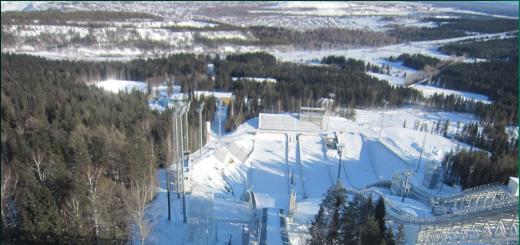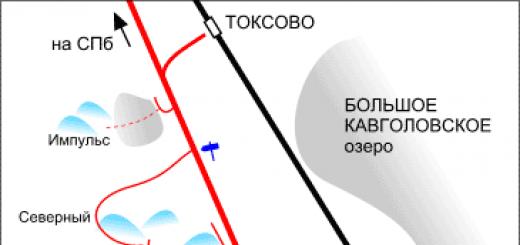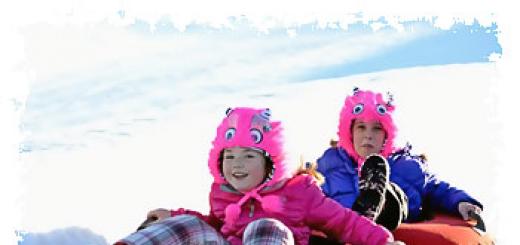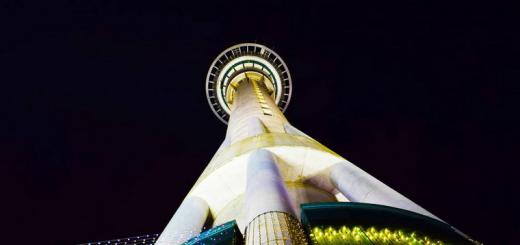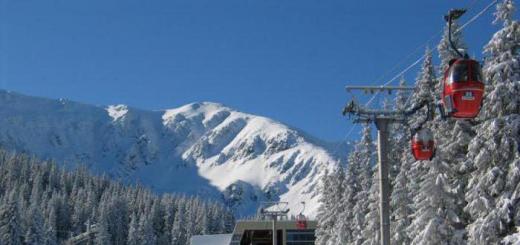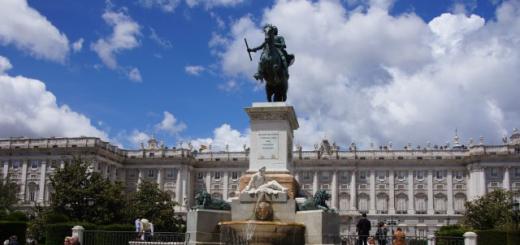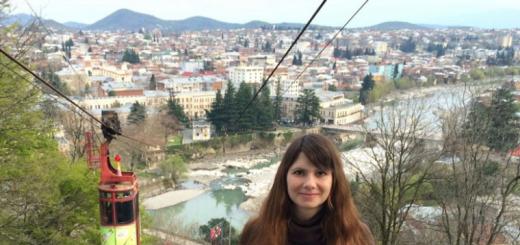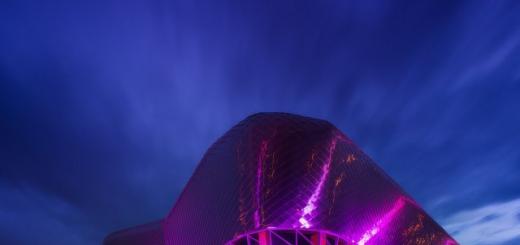Beautiful baroque palace and Kadriorg park, located 2 km. from the center of Tallinn - this is one of the best creations of the masters of the 18th century in the then Estland province created by order of Peter I during the Northern War.


Jean-Marc Nattier (1685-1766)

Benner, Jean Henri - Portrait of Peter I

In accordance with the idea of the architect Nicollo Micchetti, specially invited from Rome, the palace was built in the image and likeness of Italian villas, consisting of a main building and two annexes. The main hall is one of the finest examples of Baroque architecture not only in Estonia but throughout Northern Europe. In addition to Russian and Italian artists, masters from Stockholm, Riga and Tallinn also took part in the work on the building. The two-story hall is richly decorated with stucco and ceiling paintings. The lobby and some other rooms in the main building have kept their original appearance since the 18th century.


The name Kadriorg (Valley of Catherine) is associated with the name of Empress Catherine II. Most of the rulers of the Russian Empire, starting with the daughter of Peter the Great, Elizabeth, regularly attended the imperial summer residence.

VIGILIUS ERICHSEN Catherine the Great.

Catherine II. 1770th. Sablukov Ivan Semyonovich

Portrait of Catherine II in a traveling suit Mikhail SHIBANOV
In 1714, for Peter I, a summer manor was acquired from the Drenteln family for the construction of a park and a palace. Initially, the park was intended for the walks of the townspeople (who, having heard about the tsar's tough temper, were simply afraid to walk there), the palace was for the summer residence of the royal family, named after the wife of Peter the Great, Catherine I - Kadriorg (Catherine Valley).

July 22, 1718 is considered to be Kadriorg's birthday. Peter I arrived in Tallinn by ship on July 19, 1718, and he was accompanied by the Roman architect Niccolo Michetti, who had been admitted to the Russian service a few months ago, and his apprentice Gaetano Chiaveri, who later surpassed his teacher. Together, they determined the location and composition of the "new palace", as well as a plan for laying out the park and gardens.


The palace overlooked Old city, harbor and sea. The choice of the place was, of course, not accidental, because Peter I experienced a special craving for the sea. Unfortunately, the construction of the park and palace was not completed during the life of Peter I.


Later, the Kadriorg Palace, as a royal residence, was used relatively rarely. During their visits to Tallinn, all Russian emperors stayed in the palace - from Peter I to the last of the Romanov dynasty - Nicholas II.


In 1919, the history of the palace began as a museum, where the Art Museum is currently located. The collection of the museum consists of more than 900 Western European and Russian paintings, 3500 prints and about 3000 sculptures. The lobby and some other rooms in the main building have retained their original appearance.















I really love to visit the Kadriorg park in Tallinn. It is beautiful in all seasons of the year. In summer, there is a riot of greenery, a play of fountains, a pond on which black and white swans gracefully swim, which tourists and locals love to feed.
The flower beds are real living pictures, skillfully and carefully created by park workers. Palaces, museums, children's playgrounds, the Song Festival Grounds. All this will share your summer mood!

In the fall, you will find yourself at a real ball of falling leaves. Expansion for children - you can knock down spiny chestnut hedgehogs with sticks (they will not scold), make wreaths of leaves.
In winter, it’s just nice to wander along the sleepy alleys, covered with snow, to feed the birds and squirrels, which are completely tame here and trustingly can take food right from your palm.

In spring, here you are happy to watch the awakening of nature, breathe in the fresh park air, and your heart also revives and thaws.
Interesting fact: In Kadriorg, one might say, the Estonian spa culture was born. And the first such salon was founded on the coast back in 1813 by a certain adviser Witte.
How to get there

We have to move from Viru Keskus bypassing Tallinn University along the Narva highway. Brisk step you will get there in 25 minutes.
History
The very name "Kadriorg" sends you and me back to the times of Peter the Great, because it was in honor of the beloved wife of the Great Catherine that the park got its name. True, at first it was pronounced as Ekaterinental, but after that it turned into an intelligible Estonian ear modern name... “Kadriorg” means “Kadri valley”, and Kadri, you guessed it, is the Estonian analogue of the beloved name of ancient Greek origin in Russia - Ekaterina.

The park is located on 300 hectares. After the surrender of Tallinn (then - Reval) and the annexation of Estonia to Russia during the events of the Northern War of 1700-1721. Peter the Great and his wife first arrived in Revel in 1711.

In Revel they really liked the place near Lasnamägi (Bald Mountain), where the noble people of Revel had their summer manors. So Peter I bought one of the plots into state ownership of Russia in 1714. In the house located there, our king made his residence (today - a museum: house I). Compared to the Petersburg scale, it was very modest.

In the garden adjacent to Peter's house there were "unseen trees" from Holland - chestnuts. According to the plan, it was decided to create a palace and park ensemble in this unique natural place, as in the capital's Peterhof. The case was entrusted to the Roman architect Niccolo Michetti with his assistant Gaetano Chiaveri, as well as to their "colleague" - St. Petersburg resident Mikhail Zemtsov.

It is believed that Peter the Great himself laid 3 bricks in the wall of the palace, which was finally built in 1727. They are located in the corner pilaster of the northern wing. At the same time, park ponds were created.

Today we can see some of the beauty conceived by Peter in the 18th century. Unfortunately, his ideas were never implemented until the end. By the way, the founding king of this Tallinn pearl himself ordered the park to be made public, that is, with his light hand, Kadriorg became a public domain.
Original layout
The three-level natural landscape of the area itself eloquently suggested how to arrange the location of park zones. In front of the palace, which majestically spread its 2 wings on a ledge like a giant stage, the Lower Garden was supposed, behind the palace - a garden of flowers with a fountain Mirage wall. And above - Mirage Lake with an upper garden.

The lower garden, which at its base had the shape of a cross, was divided by alleys. In its oak forest, there are still oak trees, which are older than the palace. Arched bridges were thrown across the canals. In front of the palace, the space was decorated with flower beds. The upper garden was courtyard.
Here and today, they maintain a color scheme of colors to match the pink walls of the palace. Peter also wanted to create a sculptural cascade of fountains, for which a canal was dug from Lake Yulimiste to feed the ponds and canals of Kadriorg.

But after his death, the new royal court considered worthy of attention only bringing what Peter began to the end. But even in this "unfinished" version, the Kadriorg ensemble appeared as a grandiose masterpiece in the Baroque style for little Tallinn.
Reconstruction of "Kadriorg"
At the end of the XIX century. The lower garden became more like dark dense thickets. In 1897 the oak grove was thinned out according to the project of renovation of Kadriorg. The sea views have become more open. In 1902, at the end of the Morskaya Alley by the sea, a monument "Mermaid" was erected (a story about it below). In 1934 the Swan Pond was changed. An elegant rotunda (architect V. Seydra) appeared on the islet in the center, opposite which today everyone loves to take pictures. On the site there is a decorative garden - Kivisilla with flower beds, on which, keeping traditions, and today, flowers are planted in the colors of the Estonian folk costume. A sundial is also installed there.
A Youth Park with a swimming pool and sports grounds appears to the south of the pond. The part facing Lasnamäe houses the concert hall of the Song Festival Grounds. The Rose Garden with a fountain is laid out on the lower terrace, the building of the Presidential Chancellery (architect A. Kotli) is under construction, where it is now located Presidential palace.
Part of the channels of the Lower Garden was eliminated, but a pond appeared, into which from the rocky slopes of the Little wolf gorge-Väike Hundikuristik - a frisky stream runs down. In 1990, the Kadriorg Small Enterprise took over the transformation, rolling up its sleeves. Having gained independence, he again draws attention to unique park, which appeared in its capital, by the way, thanks to the Russian tsar.
In 2000, the palace of Catherine was restored and the Flower Garden with fountains was restored.

In 2005, a bronze sculpture of Poseidon (sculptor M. Carmine) appeared in a cascade niche, and a rose garden with 5,500 rose bushes replaced the alpine slide.
In the summer, I highly recommend visiting this wonderful place. Aroma, beauty, tenderness!
In 2006, busts of the presidents K. Päts and the legendary L. Meri, whose name is today the Tallinn airport, were installed in the niches of the wall of the Upper Garden.
In 2011, the Japanese Garden, which is the rarest in Europe, will open in Kadriorg.
Kadriorg Park is free to visit all year round and around the clock!
Major attractions
I really want you to love this wonderful vacation spot just like me! “Kadriorg” should be given a full day of your trip, because there are so many interesting things to do here!

Monuments
On the map you can see their location in Kadriorg.

- Monument "Mermaid" (Russalka mälestussammas) - No. 1. This is the creation of the famous sculptor and painter, academician, one of the founders of Estonian national art Amandus Adamson. There is a monument by the sea at the exit from "Kadriorg". Dedicated to 177 sailors of the Russian Imperial Navy who died on the battleship "Rusalka" on September 7, 1893. Created mainly with donations from citizens. Newlyweds will certainly come here, and school graduates greet the dawn. A beautiful tradition. Tourists like to take pictures at the site of the monument. Climb the steps of the stone staircase, opposite which is a bronze bas-relief depicting an armadillo fighting the storm. Read the names of the 12 officers who died. On the pillars surrounded by the monument are the names of 165 other members of the Rusalka crew. Bronze parts were made in St. Petersburg, lanterns - in Revel, granite was brought from Finland.

- Byust the author of "Mermaid" Amandus Adamson, installed in 1962 (sculptor Albert Eskel, architect Allan Murdmaa) - №2.
- Monument Estonian teacher, doctor, writer Friedrich Reingold Kreutzwald, opened in 1958 (sculptors: Endel Taniloo and Martin Sachs) - №3.

I think it will be interesting for you to know that the main work of this unique writer is the national Estonian epic Kalevipoeg, based on folk tales. And we see images of Kalev and his wife Linda on the wrappers of the most popular Kalev chocolates.
- Monument to the politician and activist Jaan Poska, installed in Kadriorg in 2016 (architects Pille Noole, Yullar Ambos and Ioannis Likuras, sculptor Elo Liiv) - №4.

- Monument to Estonian sculptor Jaan Koort, established in 1983 (authors: Edgar Viyes and Andres Mänd). The works of Koort himself are presented in the KUMU Museum, located in "Kadriorg" (which I will also talk about) - no. 5.

- Monument to Gustav Ernesaks- an Estonian songwriter, composer and conductor. (2004, work by E. Valli and V. Lillimets). A large 2.5 m sculpture is located on the Song Festival Grounds - # 6.

One gets the feeling that the composer is sitting and looking at the song arena. On the basis of the monument - the autograph of Ernesax himself. Children and adult tourists love to be photographed on his lap.
Museums
For convenience, I propose a map of the museums I describe.

Catherine Palace (№1)
Today it houses one of the 5 branches of the Art Museum of Estonia. There are works of foreign art of the 16th - early 20th centuries: Western European and Russian painting, graphics, sculpture and applied art (more than 9000 works). That is, it is the only museum completely dedicated to masterpieces created outside Estonia. Its branch is the Mikkel Museum.
The main goal of the Kadriorg Art Museum is, so to speak, "to bring beauty, created outside the country, to the masses."

The conferences held here and scientific publications are also for this purpose. Therefore, this museum has a wide network of friendly contacts. It includes collegial relations with museums, restoration centers and scientific institutes in Europe and Russia, cooperation with institutes of Estonia itself.
It hosts classes for students and student practice. It also has its own educational center - with the pompous name of the Palace School, where every year more than 1000 excursions and a lot of events for children are organized, dozens of youth programs are carried out, as well as lectures of the Saturday Academy for adults, guiding courses are organized, and even birthday celebrations are held.
The museum often hosts chamber concerts and receptions.
Opening hours and tickets
- October – April: Wed: 10: 00–20: 00; Thu-Sunday: 10: 00-17: 00
- May – September: Wed: 10: 00–20: 00; Tue, Thu-Sun 10: 00-17: 00
- Tickets: adult 4.80 EUR, concessions - 2.80 EUR, family - 9.30 EUR.
- Free with TallinCard.
- General, admission to KUMU, Kadriorg Art Museum and Mikkel Museum - 11 EUR (the most convenient option)
Mikkel Museum (no. 2)
Also - a branch of the Art Museum of Estonia. Located in a small house of the former kitchen of the Catherine Palace. All exhibits were donated in 1994 by the collector Johannes Mikkel (1907-2006). This is the richest private collection in Estonia. Such is the "micro Tretyakov Gallery". Here are a lot of works of art of different techniques of execution of the period of the XVI-XX centuries.

Mikkel himself considered himself a philosopher, and his philosophy preached, as a collector, that there is no need to search for art objects, since art itself has the gift of coming where it is understood and loved.
Opening hours and tickets
- Opening hours: Wed: 10: 00–20: 00; Thu-Sunday: 10: 00-17: 00;
- Adult ticket (from 2017) - 5 EUR, reduced ticket - 3.50 EUR, family - 10 EUR
KUMU Museum (no. 3)
Having seen enough museums in different parts of the world, I was pleasantly amazed by it. Somehow at once! I just plunged into his melody, and I wanted to sing along! It will take at least 2 hours to inspect the galleries of this one of the 5 branches of the Art Museum of Estonia (and by right of scale - the main building, opened in 2006). Here you can see Estonian art from the 18th century. to the present day.

I wrote about him in. The museum has a cafe, so you can drink coffee and even dine right in between viewing the exhibitions. I would especially like to draw your attention to the interactive exhibitions of young talented designers and artists that are taking place here. Taking part in their plans, you yourself seem to begin to play some game that suddenly opened for you. The museum is good for inspiration and relaxation.
Ticket prices from 2017: adult 8 EUR, reduced price 6 EUR; family 16 EUR
Miiamilla Children's Museum (no. 4)
A branch of the Tallinn City Museum, located near the Swan Pond in a cozy house with a turret. Opened since 2009 for children from 3 to 10 years old. Children under 7 years old are certainly accompanied by adults, for whom everything here will be interesting. A prerequisite is that you need replacement shoes. Not captured, the choice is yours - either stomp in your socks, or buy slippers at the checkout.
There is also a nice innovation in this museum: if you came with several children, and one of them is a little girl (and there is no one to leave at home with), then you will be given a lock for the stroller, which you will use to fasten it from the outside and avoid “theft of this vehicle”!
Here children ask questions, twist and twist everything, try by eye and tooth (probably). It's fun and interesting! In addition, there is a cozy cafe for you: pastries, juices, coffee, ice cream!
Opening hours and tickets
- You can come here Tue-Sun: 12: 00-18: 00 (ticket office closes at 17:30).
- Tickets: family (two adults and up to four children) - 6 EUR; preferential (children from 3 years old, schoolchildren, students, military personnel, pensioners) - 2 EUR; adult - 3 EUR. Little girls up to 2 years old - free of charge! Active Tallinn Card.
- We photograph everything, but only on condition - no flash!
House-Museum of Peter the Great (№5)
Since 1941 - a branch of the Tallinn City Museum.
This is the very house-residence, the modesty of which I have already mentioned. Here the royal couple of Peter and Catherine stayed since 1714.

The preservation of this house was taken care of by Emperor Alexander I, who visited Revl () in 1804, having seen the state of this house, he demanded to restore the dilapidated "old palace" of Peter I. And, it should be noted that already in the 19th century this museum became popular among Revelians and their guests. Today, educational lectures, events and excursions (including in Russian) are held here.
Opening hours and tickets
- Tickets: adult - 2 EUR; students - 1 EUR; with TallinnCard - free of charge.
- Open: (May – August) Tue – Sun: 10: 00–18: 00; (October – April) Wed – Sun: 10.00–17.00
Also worth seeing
These sights can be viewed here:

Japanese garden
When I saw this garden for the first time, I was very glad that another wonderful decoration appeared in Kadriorg!
The garden has been open since 2011, created in the sophisticated Japanese traditions by the landscape artist, hereditary gardener Masao Sone, and occupies 6 hectares. Such parks exist only in London and Amsterdam. The Japanese discourage the spread of their kindergarten school across Europe. But Tallinn was treated favorably.

The formation of the Japanese garden itself takes a long time, for years, therefore with each visit I find something new in this corner. On weekdays, it is more deserted here, so lovers of meditation have a chance to be in solitude. But in general this place is popular, and it is becoming more and more visited.
At the exit you will see a boulder brought from Hiroshima. It reminds of the victims of the atomic bombing. Such is the combination of a blossoming life, and, as I felt, a reminder of its fragility.
It is better to visit here in summer, during the flowering period of irises, rhododendrons and azaleas. There are information tables next to the paths telling Interesting Facts about this wonderful place.
Singing field
In Estonian lauluvälja. It hosts song festivals, concerts during the Beer Festival, and various musical events. The indoor arena is a unique stage under open air built in 1959.

In 2004, a large statue of the famous Estonian composer and choral conductor Gustav Ernesaks logically appeared here (see the section "Monuments").
As for the Song Field, once in my childhood I myself participated among thousands of people in this legendary song festival. There were certainly choirs in all schools in Tallinn, and we all prepared in advance for this apotheosis event for the world of culture. No wonder this holiday is on the UNESCO cultural heritage lists.

The atmosphere was amazing. The next holiday will be held in 2019. And in winter, children love tobogganing from the snow-covered slopes here, and head over heels too.
Presidential residence
Opposite the Catherine Palace is another palace - the presidential one. It was built in 1938 in the neoclassical style. The president who lives here is guarded by an honor guard of two fellows in military uniform. It is interesting to observe the change of the guard, and indeed of this guard in general.

We once saw that one of the sentries - a young boy - suddenly returned to his post with 2 paper cups. Apparently, the lads decided to cheer up with coffee. Yes, yes, he passed one glass to another, and they began to drink with pleasure right at the post! And then I imagined something that, in principle, is impossible to imagine! Someone from any of our guard of honor, or from the guys who guard the same Buckingham Palace, would also run for coffee. It's unthinkable! And here! Maybe this means “freedom in Estonian”! In general, these brave security guys are usually quite friendly. Once they even started joking with us when we were taking pictures at the palace, asking them to be immortalized on camera. Once I had to observe another curiosity: in front of this residence, one day, quietly under an umbrella opened from the sun, a strange-looking "tired traveler" was snoring, and no one chased him away. Apparently, this is why this place is reputed to be the “most homely” of the presidential residences in the Baltic countries.
Where to dine
Since it is really quite possible to stay in “Kadriorg” for a whole day, it’s time to think about where to eat for tired travelers!
- A restaurant is suitable for lunch "Kadriorg" on A. Weizenbergi 18. The reviews are good. You can taste European cuisine with Estonian flavors.

- By the Lebidin pond, be sure to drop by the cute cafe "Park Café" in the style of a Viennese pastry shop. Stylized waitresses' clothes, prints on the walls, an open summer terrace, excellent pastries, good coffee.
- The Kumu and Miiamilla museums also have decent cafes.
- In the park, there are often nice girls in national costumes from stalls stylized as carts, selling fried almonds of different varieties and some other sweets, so you can also enjoy yourself.
Finally
Kadriorg is a good place to be in any season. Here you will always get a lot of wonderful impressions. Indeed, even in rainy weather or in winter, you can visit museums and sit in cozy cafes... And let the natural splendor delight you with its fairy tales. What do I recommend? Take an umbrella, a camera with you, wear comfortable shoes for hiking and don't forget to grab a good mood too!
Address: Estonia, Tallinn
Start of construction: 1718 year
Completion of construction: 1727 year
Architect: Nicolo Michetti
Coordinates: 59 ° 26 "18.4" N 24 ° 47 "29.3" E
Short description
Just 10 minutes by car from Old Tallinn, and the tourist enters the prestigious seaside district of Kadriorg.
A bird's eye view of the Kadriorg palace and park ensemble
Thanks to the fresh sea air and beautiful park Kadriorg has long been a favorite place for walks among residents and visitors alike. In the ensemble of Kadriorg, wooden houses of the 19th century and luxurious villas peacefully coexist, but the Kadriorg Palace (Ekaterinental) is rightfully recognized as the main attraction of the area.
The history of the palace dates back to the times of the Great Northern War (1700 - 1721), when Peter I conquered Estonian lands and ordered to build a mini-Versailles for his wife Catherine. On July 25, 1718, Peter I, together with the court architect Nicola Michetti, measured the site for the foundations, determined the composition of the new palace and gardens. Tradition says that the Russian tsar himself laid the first stone in the foundation of the building.

At that time Michetti was up to his throat busy with Petersburg affairs, completing the construction of the Monplaisir pavilions, Marly in Peterhof, the Hermitage and the palace in Strelna, so the tsarist architect sent his deputy, M.G. Zemtsov, to Revel. In 1721 - 1725 Zemtsov headed the construction of Kadriorg, guided by the drawings and instructions of Michetti. By the time of the last visit of Peter the Great to Tallinn (1724), the interiors of the palace had not yet been completed, the finishing work was completed only after the death of the tsar. Kadriorg was rarely used as a royal residence. While the construction of the main building was underway, the royal couple lived for some time in the side pavilions. Later, all the All-Russian emperors who visited Tallinn stayed at the Kadriorg Palace. Initially, the palace was called Yekaterinental (German: Catherine's Valley), but the townspeople changed the name to the Estonian style - Kadriorg ("Kadri Valley").

Kadriorg State Hall - Imperial Baroque luxury
Like Italian villas The Kadriorg ensemble consists of a palace erected on a dais and two pavilions... The facade of the main building is decorated with a protruding projection with a central portal leading to the lobby. A cenotaph with the image of the Russian coat of arms and anchor is installed in the wall of the lobby. In the middle of the slab is engraved a text in Latin, the translation of which reads: "Peter I, by God's grace, the king of all Russia, commanded to build a house on this place in Revel in July 1718".
Also in the lobby are three replica sculptures: Venus de Milo (work of G. Voss, 1859) and two lions by A. What are, similar to those in the Cathedral of St. Peter in Rome. The suite of palace rooms occupies two floors. The main pride of the palace is the Great, or White Hall, richly decorated with stucco. The lower part of its walls is decorated with pilasters topped with openwork capitals with volutes and floral wreaths, and the upper part is rhythmically dissected by decorative blades.

The ceiling is decorated with picturesque plafonds framed with stucco decoration in the form of leaves, shells and flowers. The central plafond painting "Diana and Actaeon" captures the moment of myth when Actaeon spied on Diana and her nymphs bathing, causing the goddess to anger. The Great Hall is furnished with fireplaces, richly decorated with vases with flowers and busts, and above them, on the walls, against the background of stucco curls, there are cartouches crowned with crowns with the Latin letters "E" and "P" - the initials of Peter and Catherine.
Kadriorg park and the house of Peter I
The Kadriorg Park has ponds, fountains with gazebos, fancy flower beds and a rose garden. Alleys are laid from the palace, and open-air concerts are held on an island in the middle of the Swan Pond in summer.

In 2011, Japanese landscape architect Mason Sone laid out a Japanese garden with rhododendrons, azaleas and irises in the park. In the immediate vicinity of the Kadriorg Palace are the residence of the President of Estonia, the house-museum of Peter I and the Kumu Art Museum, covering the art of Estonia from the 18th century to the present day. Peter's two-storey house is furnished in the spirit of Peter the Great's times, the tsar's personal belongings have been preserved - a table with a map of the Baltic laid out on it, a model of the Shlisselburg ship, two secretaire cabinets, etc. In 1714, Peter I bought this house with the adjacent lands from a widow landowner Drenteln for 3500 thalers. While the Kadriorg Palace was being built, the All-Russian Emperor was content with a modest burgher dwelling.

Returning to his residence a few years later, Peter I expressed surprise that the residents of Revel did not go to new park... The guard officer reported to the tsar that the commandant had forbidden the townspeople to walk around the tsar's possessions. The very next day, the imperial will was announced in Tallinn to drum rolls: all residents of the city are allowed to visit Kadriorg and enjoy its beauties.
Even if you only have one day to see the sights of Tallinn, Kadriorg Park should definitely be included in the list of places to visit. After all, this is not just a corner of nature in the middle of the city.
Several museums are collected there, the Japanese Garden is laid out, fountains are rustling. And the main pearl of the park is the imperial palace. In this article, we will tell the entertaining story of Kadriorg.
The park itself is open all year round and around the clock. The entrance to it is absolutely free. But the museums located on its territory have opening hours. How to get to the park, what is better to visit - we will tell you in this short essay. We will support our story with photographs.
The history of the founding of the park
As a result of the Northern War, in the early years of the 18th century, Revel (modern Tallinn) fell into the possession of Russia. In the fall of 1710, the troops entered the city, and already in 1711, Peter the Great arrived here with his wife.
Ekaterina really liked the surroundings around Lasnamägi Hill. This land belonged to a certain widow Drenteln. In 1714 the tsar bought the land from her for three and a half thousand thalers. Moreover, the land immediately passed into state ownership. Peter the Great decided to build a summer residence here.
The estate of the Drenteln family was urgently redesigned for the needs of the royal couple. The building has survived to this day under the name "Peter's House". But this building of modest size did not correspond to the status of an autocrat. Therefore, the king ordered to build a real palace nearby.
Since the wife of Peter the Great liked these lands very much, he named the residence Ekaterinental, which translated from German means “Catherine's Valley”.
Later this name was changed to the Estonian way. "Valley" in the local dialect is "org". And the name Katya in Estonian sounds like Kadri. This is how Kadriorg Park got its current name.

Construction of the palace complex
The site on which the autocrat wished to build a summer residence turned out to be difficult. Everywhere ground waters were at a shallow depth. In some places the land was very swampy. Therefore, before starting to construct the building of the palace, the workers dug ponds, later called Swan ponds.
This was done to drain the area. On the drained site, the Italian masters of palace and park art Nicolo Michetti and Gaetano Chiaveri began construction of the main building with outbuildings. They took as a model a typical Renaissance country villa-palazzo with elements of Baroque and Classicism.
It is known that Peter the Great was keenly interested in the construction of his residence. He put three bricks into the masonry with his own hand. The workers did not cover these stones with plaster to separate them from the others. The bricks remain "bare" to this day. They are in the corner pilaster in the north wing of the palace.
The king also chose the color of the plaster. He was then called "Mars" - in honor of the god of war. With the color of dried blood, the king wanted to emphasize that he did not inherit the palace and park of Kadriorg, but as a result of the battle.

Kadriorg park
Photos of this wonderful place resemble illustrations of Versailles, or the untouched nature of Estonia, with its meadows and groves, or even landscapes of Japan. And this is not surprising. The central alleys adjacent to the imperial palace were laid in the style of a regular French park.
The Swan Pond is just a fragment of that cascade of water bodies that can be seen at Versailles. Just like in the palace of the French kings, the far corners of the garden were made according to the canons of English park art, that is wildlife only slightly retouched, and beautiful paths were laid among meadows and groves.
According to the then fashionable philosophy of Jean-Jacques Rousseau, Catherine the First decided to start gardening. But now there is nothing left of the cabbage beds and the apple orchard at the back wall of the palace. But before it extended to the Mirage Pond (now there is the Presidential Palace).
The newest attraction in Kadriorg Park is the Japanese Garden. It appeared only in 2011. The project for him was developed by the famous landscape designer Masao Sone. Despite the harsh Estonian climate, blooming flowers can be seen in the Japanese garden from early spring to late autumn.
Park buildings
Kadriorg is famous for the fact that it has never been a closed territory. The residents of Tallinn could walk in the park, admire the flowers and black swans floating in the ponds. That is why Ekaterinental got its affectionate Estonian name.
What other buildings, besides the Imperial Palace, can be seen in Kadriorg Park? Of course, the "House of Peter the Great", which, in fact, is the old family estate of Estonian landowners. After the death of the tsar and his wife, it was abandoned, but again restored under Alexander the First and turned into a museum - the oldest in Tallinn.
The Mirage Pond was overgrown at the beginning of the 20th century. It was covered with earth, and a palace was erected on the plot, in which the first President of Estonia Konstantin Päts settled in 1938. The heads of state not only work there, but also live there.
On the border of the park rises modern building Museum KUMU. On the adjacent to the green zone, Lydia Koiduly Street, there is another building, which previously housed a chintz manufactory. Now there is the Russian Museum of Estonia.
Near the Imperial Palace, you can see the outbuildings, which used to be the master's services: the kitchen, the cellar, the guardhouse. Now these buildings are occupied by a cafe and an exposition of the Mikkel Museum.

What you need to know before visiting Kadriorg
The area of the park is quite large. Even if you plan to just admire nature and not go to any museum, you need to allocate at least an hour to explore it. There are many beautiful sculptures in Kadriorg Park in Talin that you will want to photograph.
Comes to the shore Baltic Sea... One ticket is valid for visiting all museums. It doesn't matter which exhibit you want to start your tour of the temples of art with. The ticket can be purchased at any of the museums in Kadriorg.
Despite the fact that during the years of the October Revolution the Council of Workers' Deputies of Revel was located there, the lobby, the large hall and some other rooms have preserved rich stucco molding and are beautifully decorated. Now the palace houses the Art Museum.
Kadriorg Park (Tallinn): how to get there
The address of this vast green space is quite simple: Kadriorg, A. Weizenbergi 37, Tallinn. It is easy to reach from the city center. All residents of Tallinn know this landmark of the capital of Estonia and will be happy to show the way.
The big street Laagna Tee passes by Kadriorg, which stretches on one side, and on the other there is another green Zone... This is Pae Park, famous for its beautiful large lake.
The easiest way to get here is by tram. Kadriorg is listed as the final stop of routes 3 and 1. After exiting the tram, continue in the direction of travel until you see the gate to the park.
You can also come here by bus. The Kadriorg stop (not the end one!) Is located on routes 5, 1A, 8, 35, 34A, 38, 63 and 60.
If you come to Tallinn by car, do not rush to leave it in the paid parking lots on Laagna Tee Avenue. Look for the small Valge street. Free parking is located next to the KUMU Museum, which can be reached via an underground passage.
Want to get to the park as quickly as possible? Cross the road, walk along the KUMU fence and go down the steps. Before you will be the Presidential Palace.

What museums to visit
We have already mentioned that the entrance to Kadriorg Park (Estonia) is free. And for visiting the numerous museums located in this green area, there is single ticket... So, when choosing a temple of art, you can only proceed from your own taste preferences.
The richest collection in Imperial Palace... In addition to the suite of rooms where Peter the Great and Catherine the Great once lived, you can admire canvases and sculptures by foreign masters. There is an exposition of the Art Museum in KUMU. Peter's house will be of interest to those who are interested in this period of Russian history. A private collection of paintings is in the Mikkel Museum.
If you come to the park with a child, curse in Miyamilla. This museum houses a collection of toys from different eras and nations. On the territory of Kadriorg there are also houses, whose exposition is dedicated to the classics of Estonian literature Tammsaare and Eduard Vilde.

When to go to museums
Even in bad weather, you can walk in Kadriorg Park. You need to know the opening hours of museums in order not to "kiss the doors". In the warm season (from May to September), the day off is on Mondays, and in the cold season - also on Tuesdays.
On the rest of the week, museums are open from 10 am to 5 pm, with the exception of Wednesdays, when the doors close for the last visitors at 20:00.

Ticket price
To get into the museums of Kadriorg Park (it doesn't matter - one or all at once, if you have time), an adult needs to pay less than five euros (365 rubles). There is a discount ticket for children, schoolchildren, students, pensioners. It costs only 2.80 euros (about 200 rubles).
It is better to visit museums with the whole family. "Family ticket" in this case will cost only 9.30 (683 rubles). Travelers strongly recommend purchasing a tourist Tallinn Card. It, among other bonuses, entitles you to free admission to all museums in Kadriorg.
Kadriorg park(Kadrioru park) is a baroque palace and park ensemble in Tallinn, located two kilometers northeast of the Old Town. It was originally called Ekaterinental in honor of Peter the Great's wife Catherine I, the modern name "Kadriorg" is "Catherine's Valley" in Estonian.
Greater Tallinn: Kadriorg Park
Address: A. Weizenbergi, 37. Coordinates: 59.4385, 24.79099.
Working hours: from January 1 to April 30 (Thursday - Sunday) from 10:00 to 17:00, Wednesday - from 10:00 to 20:00;
from May 1 to September 30 (Tuesday, Thursday - Sunday) from 10:00 to 17:00, Wednesday - from 10:00 to 20:00;
from October 1 to December 31 (Thursday - Sunday) from 10:00 to 17:00, Wednesday - from 10:00 to 20:00.
Monday is a day off.
A ticket to the palace costs 6 euros.
If you go to Kadriorg Park by car from the side of old Tallinn, then between the park and the glass-high-rise business center
there will be a very pleasant area with cozy wooden buildings:

- a kind of Estonian Jurmala. Moreover, it is not the wooden houses in the center that attract attention. European capital as such, but rather abrupt sudden transitions: skyscrapers - "two-story Tallinn" - Kadriorg Park. By the way, these wooden Tallinn houses are appearance you cannot confuse, for example, with Russian ones - and the point here is not in neatness or preservation, but in style: Baltic wooden houses (both Estonian and Latvian) are outwardly quite different from ours.
The situation with parking lots near Kadriorg Park is far from rosy (as, in principle, everywhere in the center of Tallinn) - the closer to the Kadriorg Palace, the more difficult it is to find a free space - so if you decide to go to the park by car, I recommend putting it in your navigator these are the GPS coordinates: N59.44217 °; E24.80022 °. This is a small free parking at the northeastern corner of Kadriorg Park, from it to the palace it is noticeable 400 meters on foot, a few steps from it there is a decorative pond and all sorts of beautiful paths-bridges:



Mossy boulders in Kadriorg Park:

Parallel to the asphalt roads in Kadriorg Park, there are neat paths:

This is for runners - you want to run on the asphalt, or on the ground. As a former skier-runner, this topic is especially close to me :-)
Tallinn landmarks: Kadriorg Palace
All the main attractions of Tallinn's Kadriorg Park are located either close to Weizenbergi Street or directly on it. And the main one is rightfully considered the Kadriorg Palace:


Kadriorg palace was built for the royal family after the victory of Russia in the Northern War and its conquest of Estonia. Emperor Peter the Great took an active part in the construction (he even personally laid three bricks in the north-eastern corner in the wall of the future palace - they are still visible, they are not traditionally plastered). Peter I intended to use the Kadriorg Palace as a summer residence and wished it to look like an Italian suburban palazzo.

It seems to me that the builders overdid it a little: as far as I remember from history, Tsar Peter was very modest and unassuming in everyday life - and therefore the magnificent Kadriorg Palace does not somewhat fit with this idea of Peter I's attitude to luxury. Although, perhaps, it is not the king himself, but his courtiers decided to please the king? By the way, Peter himself did not live to see the end of the construction of the Kadriorg Palace, and after his death the building was rarely used: it was mainly the place where Russian emperors stayed during their visits to Tallinn. Currently, the palace houses the Kadriorg Art Museum with more than 900 paintings.
Peter I, as you know, was distinguished by a special love for everything marine - so in Kadriorg Park, right opposite the palace, there is a statue of Neptune, kicking the unfortunate dolphin with such force that foam comes out of its mouth:

Moreover, the trident of mossy Neptune looks suspiciously fresh, it looks like a shiny table fork.
There is a children's playground not far from the palace:

and the rose garden of Kadriorg Park:

Near each rose bush there are plates with the names of the variety and other useful botanical information. It is very convenient if you are a gardener or an amateur summer resident: you entered the park, was impressed with a certain variety of roses, wrote out the name and go to the store for seedlings.
Another attraction of Tallinn and Kadriorg Park is the residence of the President of the Republic of Estonia:


It is located literally a stone's throw from the former royal palace, but it does not look modest like the latter - apparently, this is how the closeness of the Estonian authorities to their people is emphasized.

To get to the coastal part of Kadriorg Park, you need to cross the road at the pedestrian crossing at the intersection of Narva and Pirita Maantee streets. How can you use a guide monument to the battleship "Mermaid", which can be clearly seen right from the Kadriorg Palace itself.
Sightseeing in Tallinn: the monument to the "Mermaid"
Monument "Mermaid"- this is one of the few monuments within the former Russian Empire of a warship that died in peacetime. The news of the death of the battleship sailing from Revel (the then name of Tallinn) to Helsingfors (Helsinki) deeply shocked both Tallinn, where many personally knew the members of the ship's crew, and all of Russia. The ship sank in the Baltic during a nine-point storm, and the circumstances of its death remained unclear until the end.
The famous marine painter Aivazovsky wrote a picture about the death of the battleship, and in Tallinn, on the Baltic coast, it was decided to erect a monument to the dead battleship "Rusalka" and its officers and sailors. Monument "Mermaid" is a bronze angel who stands on tiptoe and holds an Orthodox cross high above his head.

The pedestal is crafted from roughly cut granite blocks, which is intended to suggest a raging sea.

It was thought that in our days, after such a tragedy, maximum mourning would be declared, the flags were lowered there - and that's it, no one would put up any monuments. The submarine "Kursk" sank in 2000, the tragedy was of an all-Russian scale, and I have not heard about the monument to the lost submarine and its sailors. Or maybe I'm wrong and somewhere there is such a monument?
There is a nice beach near the Rusalka monument, so you can go to Pirita beach without going to sunbathe. However, for some reason it is forbidden to swim there - and disciplined Tallinn residents observe the ban - either the current there is some kind of dangerous, or the bottom is not the most suitable for swimming. One way or another, there are a lot of people sunbathing, but I personally have never seen a swimmer.

Basically everyone is sunbathing with a view of the Tallinn ferry port:

Useful articles about Tallinn and Estonia:

.JPG)





